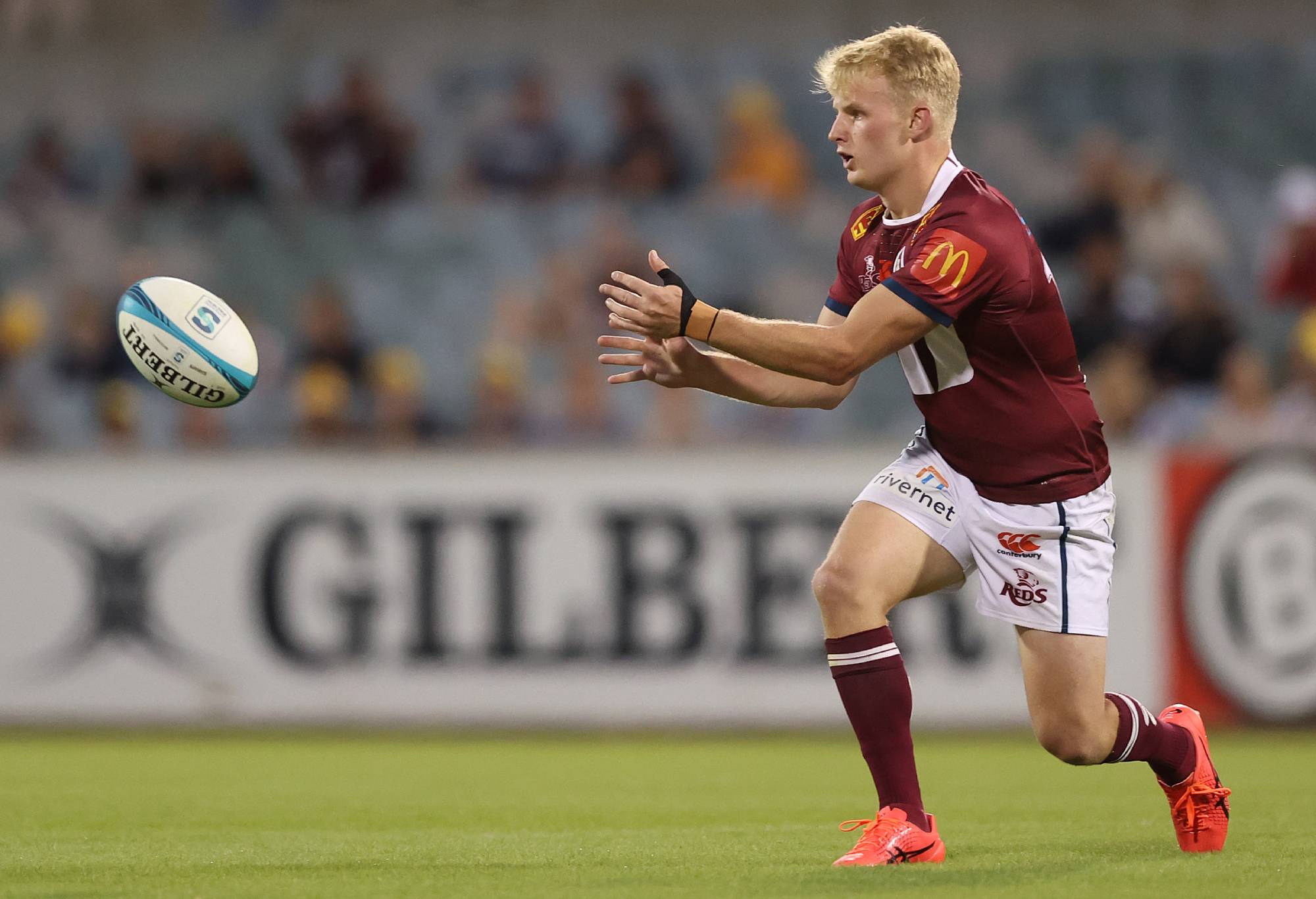Forging a cohesive unit for the long-term: The potential Wallabies partnership of Lynagh and Gordon

In the dynamic world of rugby union, where power, strategy, and teamwork intersect – cohesion reigns supreme.
Nowhere is this more evident than in the potential pairing of young talents in the number 10 and number 12 roles.
Often referred to as the playmaking duo or the tactical hub of the team, the 10 (first-five) and 12 (second-five) positions form the backbone of offensive and defensive strategies.
The prospect of two promising players joining forces to form a formidable combination holds immense excitement for fans and coaches alike.
Joe Schmidt, Current Australian Head Coach has said: “Cohesion is the bedrock of success in rugby. When the 10 and 12 work in harmony, it sets the tone for the entire team. Their understanding and communication on the field can unlock a myriad of possibilities”.
While Dan Carter, Former All Black stated: “I always felt a special connection with Ma’a Nonu on the field. We had this unspoken understanding, almost telepathic, that allowed us to anticipate each other’s moves. Playing alongside him was like having a twin on the field, and together, we were able to unlock defences and create opportunities that seemed impossible.”
The Importance of Cohesion
Cohesion is not merely about individual brilliance; it’s about synchronising the diverse skills and roles within a team to achieve a common goal. Here’s why cohesion among the 10 and 12 roles is paramount:
1. Fluidity in Attack: A cohesive 10-12 partnership facilitates fluid attacking movements. Whether it’s executing set plays, launching expansive attacks, or exploiting gaps in the opposition defence, seamless coordination between the first and second five lays the groundwork for successful offensive manoeuvres.
2. Strategic Versatility: Rugby is a game of constant adaptation. A cohesive 10-12 partnership enables teams to seamlessly transition between various attacking strategies, from structured phases to improvisational plays. This adaptability keeps the opposition guessing and opens up new avenues for exploiting weaknesses.
3. Defensive Resilience: Cohesion isn’t limited to offense; it’s equally crucial in defence. The first and second five must work in tandem to organize defensive patterns, communicate effectively, and plug gaps in the defensive line. A cohesive defensive unit minimizes vulnerabilities and frustrates the opposition’s attacking efforts.
4. Leadership and Communication: The 10 and 12 positions often serve as on-field generals, guiding their teammates through the ebb and flow of the game. Effective communication, built on a foundation of trust and understanding, is vital for orchestrating plays, adjusting tactics on the fly, and rallying the team in times of adversity.
In the realm of rugby, the prospect of two young talents coming together to form a formidable combination is always exciting.
While the likes of Tom Lynagh and Carter Gordon have not yet graced the same team, their individual skill sets suggest a natural alignment that could yield spectacular results.
Tom Lynagh of the Reds. (Photo by Mark Metcalfe/Getty Images)
Similar to other iconic combinations in rugby history, such as Jonny Wilkinson and Will Greenwood or Dan Carter and Ma’a Nonu, Lynagh and Gordon possess complementary attributes that could elevate each other’s game.
Lynagh’s vision and precision kicking could seamlessly mesh with Gordon’s flair and creativity, creating a potent attacking force that keeps defenders guessing and spectators on the edge of their seats.
One of the most intriguing aspects of having dual playmakers at 10 and 12 is the ripple effect it has on the rest of the team. With two players capable of orchestrating attacks and making split-second decisions, it allows other players to thrive in more defined roles.
Outside backs, in particular, benefit from this setup. With the attention of defenders split between the first and second five, there’s more space and opportunity for dynamic runners to exploit gaps in the defence.
This not only puts pressure on the opposition but also adds layers of unpredictability to the team’s attacking arsenal.
Furthermore, the presence of dual playmakers allows for plays to be executed wider of the ruck. By stretching the opposition defence horizontally, more space is created for intricate offloads, quick passes, and elusive running lines.
This not only opens up avenues for scoring opportunities but also showcases the team’s ability to capitalise on spatial awareness and intelligent positioning.
Carter Gordon playing for the Wallabies. (Photo by Chris Hyde/Getty Images)
As they continue to hone their craft and rise through the ranks of club and international rugby, the potential for Lynagh and Gordon to join forces becomes an enticing proposition for fans and selectors alike.
Their shared ambition, coupled with their hunger for success, sets the stage for a partnership that could define an era of rugby excellence.
In the ever-evolving landscape of rugby union, cohesion remains the linchpin of success. Whether it’s forging a dynamic partnership between the 10 and 12 roles or cultivating synergy across the entire team, cohesion lays the foundation for triumph on the field.
As promising young talents like Tom Lynagh and Carter Gordon embark on their rugby journeys, the prospect of their eventual collaboration serves as a tantalizing prospect.
Through dedication, determination, and a shared commitment to excellence, these rising stars have the potential to write their names into the annals of rugby history, leaving an indelible mark on the game for generations to come.
Sports opinion delivered daily
Cohesion is essential, even embedded in the very names of their positions: first-five and second-five, underscoring their interconnected roles and mutual reliance for success.
